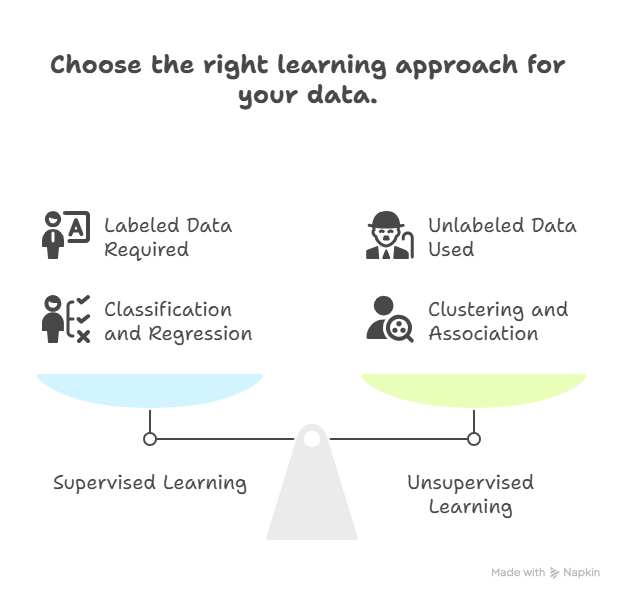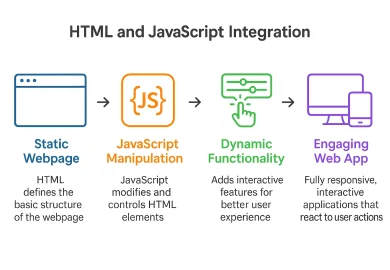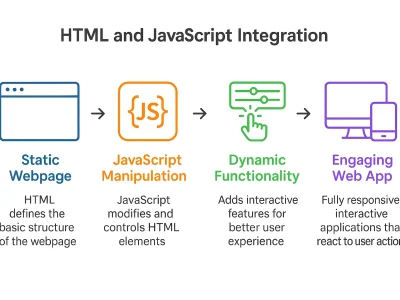Introduction
With the rapid advancement and application of AI and Machine learning from autonomous vehicles to individualised proposals, Machine learning is a spontaneous and rapidly evolving field. In today’s tech-driven world, 80% of AI projects rely only on machine learning models to assist in the decision making process. At the core, ML is categorized into two as supervised learning and unsupervised learning.
Supervised learning learns from labeled data to train new models for predicting outcomes. Unsupervised learning looks for hidden structures, patterns and relationships from unlabelled data. This article supervised vs unsupervised learning will delve deep into definitions, examples and use cases, highlighting key differences with practical approach for understanding both supervised and unsupervised learning.
What is Supervised Learning?
In supervised learning, the algorithm learns from the labelled dataset that has both input features with their corresponding output labels. The main objective of this is to establish the aligning of unseen input data with predicted output accurately.
How Supervised Learning Works
- Data Collection: It requires human effort to tag images, classify text or provide numerical values. This phase collects relevant data and marks it with the correct output labels.
- Preprocessing Phase: This phase encodes and normalises the data by cleaning, transforming and scaling the data to enhance model performance.
- Model Selection: Here, the suitable supervised learning algorithm is selected based on the data characteristics and problem type such as classification or regression.
- Training Phase: To prevent overfitting, the data are split for training and testing sets. The labelled data for training are fed into the model to learn patterns and structures. While training data to the model, internal parameters are adjusted to identify the predictions and actual labels.
- Testing and Evaluation Phase: After training, the models are evaluated for performance metrics such as accuracy, precision, recall, Mean Squared Error (MSE), or Root MSE. Most algorithms tune their hyperparameters after evaluation to make a significant impact on model performance.
- Real-time Deployment: Once the model achieves the expected performance metrics, it can be deployed on real-world data to make predictions.
Real-world Example:
- Email Spam Detection
- Image Recognition
- Medical Diagnosis
Types of Supervised Learning
Supervised learning can be broadly categorized into regression and classification
Classification
It involves assigning the input values to one or more discrete output categories.
- Binary Classification – Here, the output variable has only two possible classes, like spam or not spam, yes or no.
- Multi-class Classification – Here, the output variable has more than two possible classes, like identification of letters.
Some of the standard algorithms used in classification supervised models are Decision Trees, Neural Networks, Support Vector Machines, Naive Bayes, Random Forests, and Logistic Regression. This type is broadly used in Email spam detection, object identification, and Fraud detection in financial transactions.
Regression
Regression predicts continuous numerical output classes. It helps to estimate real value output based on input features. It is classified as linear and non-linear regression. In linear regression, the input features and output variables are in linear relationship with each other. Nonlinear regression deals with relationships that involve complex functions and transformations that are not linear in nature.
Algorithms used in regression include linear regression, Random Forest, Polynomial Regression, and Gradient Boosting Regression. Some real-time examples of regression include stock price prediction, Sales forecasting, Estimation of home value, and Reach of Social media posts.
Table 1: Algorithm Comparison Table for Supervised Learning
| Algorithm | Type | Real time Example | Advantage |
| Decision Tree | Regression and Classification | Medical report diagnosis | Able to handle categorical data |
| Linear Regression | Regression | Sales and Financial Forecasting | Transparent and fast |
| SVM | Classification | Text categorization, image identification | Suitable for small datasets. |
| Neural Networks | Regression and Classification | Speech recognition | Suitable for datasets with complex patterns |
| Random Forest | Classification and Regression | Fraud identification | Highly accurate |
What is Unsupervised Learning?
Unsupervised Learning deals with a dataset that works without any labels. It does not predict the output variables. The main objective of this learning is to identify hidden patterns, structures, and relationships within the data and organize without explicit guidance.
How Unsupervised Learning Works:
- Data Collection: It collects the unlabelled data from various resources in discrete formats.
- Preprocessing of Data: Here, the data are cleaned and transformed according to the model’s process and training.
- Algorithm Selection: The most suitable unsupervised learning algorithm is selected for desired outcomes, such as dimensionality reduction and hierarchical clustering.
- Identification of Pattern: Internal structures, patterns, groups, or relationships identified by the algorithm are grouped into similar classes for easier finding of commonly appearing objects.
- Evaluation: The review here depends on domain expertise and internal metrics that determine the quality of the patterns.
- Deployment: It needs human expertise to apply them to real-world applications.
Real World Examples
- Customer Segmentation
- Market Basket Analysis
- Cybersecurity
Types of Unsupervised Learning
Unsupervised learning is mainly divided into clustering and association, where the system finds hidden patterns and relationships in data without predefined labels.
Clustering
It is the process of grouping similar objects in the same group called clusters. The main objective is to identify the natural way of grouping within unlabelled data.
Types of Clustering
- K-Means: It divides the data into k predefined clusters where k is specified by the user.
- Hierarchical Clustering : It organises data points into the tree like cluster structures, either by combining them into larger groups or dividing larger groups into smaller ones
- DBSCAN : Density-Based Spatial Clustering of Applications with Noise (DBSCAN) identifies outliers and groups dense areas.
Use Cases
Image Segmentation, Document Clustering, Customer segmentation.
Association Rule Learning
It is the process of identifying a set of items that commonly occur together. The goal is to identify the relationship between the items that often occur together.
- Apriori algorithm explanation This algorithm identifies individual items that occur often and continues with larger items. This constantly builds up helps to discover robust associations.
- Use Cases Product placement optimization, Market basket analysis (Customers who buy toothpaste also buy toothbrushes.
Dimensionality Reductions
It is the process of reducing high dimensional data or variables with structure preservation. The goal is to remove noise, simplify data, and make it easier to visualize without losing required information.
- Principal Component Analysis (PCA) and Feature Extraction : It involves the conversion of data into a new set of uncorrelated variables. This is called principal components which extracts the feature components effectively.
- Data Compression and Visualization: The data can be compressed by minimizing the number of dimensions, speeding up processing, and saving storage space. The visualization makes it easier for the algorithm to identify patterns.
- Use Cases: Preprocessing of data to improve performance in short training time, noise reduction, and data visualization.
Supervised vs Unsupervised Learning: Differences
Table 2: Supervised vs Unsupervised Learning: Differences
| Features | Supervised Learning | Unsupervised Learning |
| Data Requirements | Labeled data | Unlabeled data |
| Data Preparation Effort | Time-consuming and Expensive | No labeling required |
| Dataset Size | High quality, large datasets | Work with large datasets |
| Learning Approach | Guided | Exploratory |
| Prediction vs Pattern Discovery | Targeting accurate predictions | Targeting to identify structures, clusters, and relationships |
| Feedback mechanisms | Explicit | Internal metrics guidance |
| Algorithm and techniques | Classification and Regression | Clustering, Association Rule Learning, Dimensionality Reduction |
| Complexity Levels | Simple to Complex | Simple to Complex |
| Performance Evaluation | Objective metrics | Subjective and challenging |
| Output and Results | Predictive | Descriptive |
| Accuracy Measurement | Quantifiable against ground truth | Challenging to quantify |
| Interpretability Challenges | Less interpretable for complex models | More interpretable based on the technique |
| Use Cases and Applications | Image classification, sales forecasting | Anomaly detection, Market segmentation |
| Problem Types Best Suited | Prediction, Classification, Forecasting | Pattern discovery, outlier detection |
| Industry-specific Applications | Technology, Finance, Healthcare | Cybersecurity, Retail, Customer segmentation |
| When to choose which approach | Goal is prediction with available labelled data | Goal is to identify hidden patterns with scarce labeled data |
Advantages and Disadvantages
Supervised Learning Pros and Cons
-
Advantages With the help of high-quality labeled data, Supervised learning algorithm achieves higher accuracy, clear evaluation metrics, and proven results in real-world applications.
-
Disadvantages Requirement gathering is a drawback as it consumes time and is expensive. Poor performance on unseen data due to overfitting is a risk. It relies only on known patterns, which struggle with unseen data points.
Unsupervised Learning Pros and Cons
-
Advantages Less effort and cost for data preparation. Helps to discover hidden patterns with the ability to handle large datasets.
-
Disadvantages As the data are unlabeled, evaluation depends fully on internal metrics. Identified patterns are less precise when compared to predictive results. Deployment depends on domain expertise.
When to Use Each Approach
Supervised learning -> if you have labelled data with accurate prediction goals.
Unsupervised learning -> If you wish to learn insights and patterns without labelling of data.
Semi-supervised or Hybrid learning -> Low cost with scarce labeled dataset.
Real-World Applications and Use cases
Supervised Learning Applications
- Healthcare : Medical diagnosis, Drug Discovery
- Finance : Credit Scoring and Fraud detection
- Technology: Image Recognition, Speech recognition
- Business: Sales forecasting, Customer lifetime value
Unsupervised Learning Applications
- Marketing: Customer Segmentation, Market Analysis
- Cybersecurity: Anomaly detection, intrusion detection
- Retail: Recommendation systems, inventory optimization
- Research : Gene sequencing, social network analysis
Industry Case studies
- Netflix recommendation system (Hybrid approach)
- Google’ search algorithm evolution
- Amazon’s product recommendations
- Tesla’s autonomous driving technology
Common Algorithms Comparison
Popular Supervised Learning Algorithms
-
Linear Regression It predicts the values or datasets which form a continuous linear relationship. Due to its linearity, it is not suitable for complex dataset relationships.
-
Decision Trees As it visualises the decision making process, it makes the model more transparent and understandable.
-
Random Forest The ensemble method improves robustness by minimizing overfitting and also enhances the accuracy.
-
Support Vector Machines (SVM) The process of finding optimal decision boundaries at high dimensional spaces may assist in handling complex boundaries.
-
Neural Networks It is more versatile and powerful for deep learning applications which involve speech recognition and natural language processing.
Popular Unsupervised Learning Algorithms:
- K-means Clustering – It is simpler and efficient
- Hierarchical Clustering – A dendrogram (visual representation) of the relationship between clusters helps select flexible clusters.
- DBSCAN- Effective to find arbitrarily shaped clusters and outliers.
- PCA. Dimensionality reduction reduces the number of features while preserving the underlying structure.
- Apriori: It is primarily used in market basket analysis, where frequent item sets tend to occur together.
Algorithm Selection Guide
Algorithms should be selected by considering the problem type, data size, and complexity factors, performance, and interpretability trade-offs.
Getting Started: Practical Implementation
Tools & Technologies
- Python: Scikit learn, TensorFlow, PyTorch
- R: caret, randomForest, arules
- Cloud: AWS sageMaker, DataRobot, Teachable machine
- No-code ML Platforms: Google Cloud AutoML, DataRobot
Step by Step Implementation Process:
The data are collected raw or labeled and cleaned, optimized, and transformed. The model is selected based on the type of problem. The dataset is then trained in the model and the hyperparameters are tuned. Finally, these are integrated into production systems.
Best Practices
- High-quality cleaned data is more effective in machine learning models.
- Model validation techniques are used to estimate a model’s performance and prevent overfitting.
- Data leakage, biased datasets, and common pitfalls should be avoided.
- Continuous performance monitoring enables the deployment of models to address performance degradation.
Future Trends and Consideration
Emerging Trends
A self-supervised learning advancement model that learns from data under its own supervisory signal from its data itself. Transfer and reuse pre-trained models on new models. From data preprocessing to model selection and hyperparameter tuning, automated machine Learning (AutoML) tools automate the process of machine learning pipeline. Machine learning models on Edge computing and Mobile ML reduce latency and enhance privacy.
Industry Evolution
With the improvements in computational power, Data availability is increasing day by day. Ethical AI considerations and Regulatory compliance requirements result in frameworks like the EU AI Act.
Career Implications
The demand for ML increases the skills demand in the job market. This influences beginners to start with learning path recommendations. There are several online courses available to acquire certification and training opportunities in ML skills.
Conclusions and Next Steps
Choosing the ML models depends on data availability, goals, and performance constraints. Hybrid approaches are often considered as the best for greater insight. Tutedude stands out as the best platform to master Machine Learning. Enroll today to kickstart your career in the digital world of AI and data!
Supervised vs Unsupervised Learning are two of the most popular approaches in machine learning. You can explore more in this detailed guide from Google Developers.





